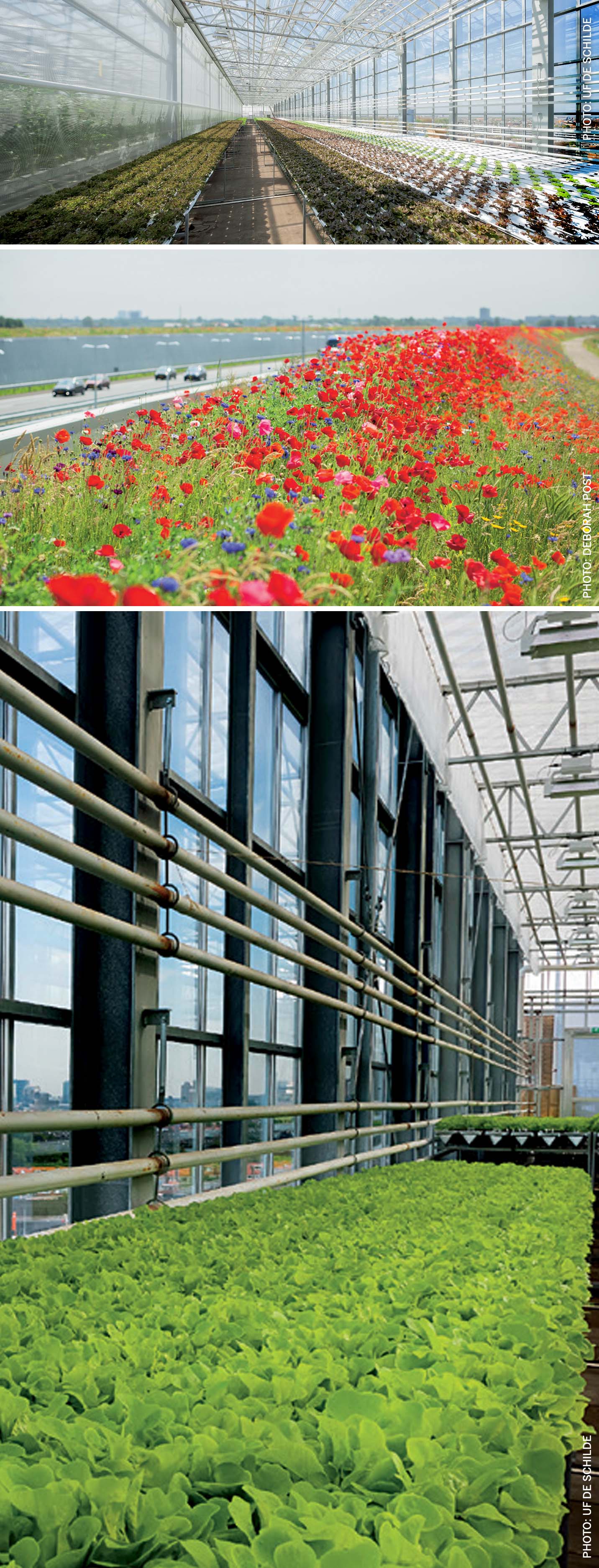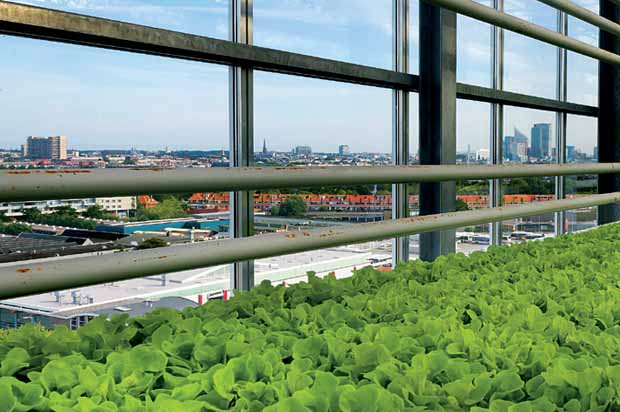
The world’s urban population is on the increase and it is projected that 66% of the inhabitants will be living in cities by 2050. The Smart Cities Mission of India will hopefully be a catalyst in improving the quality of infrastructure, amenities and affordable housing in a planned and integrated way, thereby improving the quality of life.
As the urban population grows in India, the outlying farms are being replaced by structures. This has an impact on the environment as well as on food security. The two are inseparable. India, being a large country with an enormous population to feed, has fertile lands in some areas that have fallen prey to urbanisation. If this multiplies due to the growth of urban areas all over India, we will risk losing more and more agricultural land every year. Arable land needs to be treasured. Hence new developments need to take this into consideration at every step of future planning.
Many people and organisations around the world are becoming conscious of food security and the carbon footprint of transporting food over vast distances using precious fossil fuel. We also need to take into account wastage of food and loss of nutrients along the way. Simultaneously, natural pollinators like birds, bees, bats, nocturnal and other beneficial insects are threatened and dislocated in the process of urban growth. Bees, one of the most prolific pollinators and crucial to our food security (90% of our crops are pollinated by them), are especially under the greatest danger in this decade due to many environmental and external factors.
Put both these together and it becomes necessary that we factor in protection of the environment into development as well as procure our basic nutrition like fruits and vegetables, at least, from the nearest possible location. Green zones need to be integrated, not only for decorative and landscape purposes, but also to enhance the environment with nutrient rich and fresh produce, to service the urban areas in its vicinity while using minimum water.
Sustainability of city structures needs to be revised. For example, in an attempt to go green, there is a Sustainable City created even in a place like Dubai where 11 domed greenhouses are incorporated at the centre of 500 villas in which produce can be grown. So how can we do this in India, a country blessed with good climate?
First, let us consider the approach roads with their berms. At present these are typically littered with the unsightly sprawl of encroachments of little shops, garages and hutments. The approach roads to an urban area, ideally in a hot climate, should be at least three to four tree-rows deep. Undergrowth here should comprise of natural hardy indigenous flowering shrubs that will require less /no water and low maintenance, but will, at the same time, enhance seasonal changes due to its flowers. These shrubs support bird and insect life. Entering an urban area through a thicket of green is also a pleasant experience.
Green zones need to be integrated, not only for decorative and landscape purposes, but also to enhance the environment
Seeding the roadside berms with hardy perennials, along with indigenous shrubs and wild creepers that flower, will create a colourful visual impact as well as be a source of food for bees and beneficial insects. These will also create nesting opportunities and shelters for birds. Government bee centers as well as reliable nurseries and forest departments can collaborate on the plantation guidelines. The more indigenous and low maintenance, the better it is for sustainability and survival.
Within the urban areas, road berms should incorporate low natural grasses and shrubs that have open flowers with varying flowering seasons. Seeds of hardy seasonal flowers will attract bees and be a source of food for them. Instead of covering the ground with grass in these open spaces, flowering groundcovers will help bees and insects. This will reduce water usage, evaporation and keep dust under control. Trees chosen for roadsides should be flowering types, which during bloom in different seasons will be a food source for bees.

Middle: Honey Highway A4
Bottom: Salad leaves on rooftop greenhouse
In a first of its kind, in the Netherlands, the beautification of 6 kms. of the A4 highway between Schiedam and Delft, (an initiative by Deborah Post, who is a biodynamic beekeeper inspired by Rudolf Steiner), has been successfully realised to support the wild bee population for most part of the year. This was made possible with help from the Rijkswaterstaat (government agency) and big road companies. It has created an enthusiastic response in many cities around this country, contributing to creating a massive awareness amongst the public, about the solution to save the bees. Since the creation of the A4 Honey Highway two years ago, Deborah Post has been part of a number of successful projects. Roadsides, dykes, provincial roads, railways and also landowners make their land available for sowing wild organic flower seeds. A total concept that has contracts with the government and large companies. Coupled with biodynamic bee-courses, placing biodynamic beehives in the projects, along with communication about the importance of bees, has evolved into a movement. Honey Highway has been selected as one of the 17 Dutch innovations to be an example to the rest of Europe and the world (www.honeyhighway.nl).
Urban food production is a relevant topic of interest. On the outskirts of cities, adequate hectares of farms can be earmarked as far as possible on all sides. Farmers can be encouraged to form a cooperative or farm in consultation with one another. Ideally, the vegetables required for the immediate urban areas should be grown here and the specialised vegetables that have now reached our plates like broccoli, leeks, capsicums can be grown in medium-tech poly-tunnels. Fruit orchards can supplement the farmers’ incomes and assure direct supply with less damage to the city. Bee keeping will also support incomes of farmers and at the same time assure good pollination.
Shrubs support bird and insect life. Entering an urban area through a thicket of green is also a pleasant experience
It is also relevant that efficient vertical farming will soon be a norm, especially for microgreens that are a powerhouse of nutrients. Salad greens and sprouted seeds can be supplemented by mushroom farming. UrbanFarmers, The Schilde in The Hague, is one such exciting example. Using an old, deserted Philips factory in the city, it has integrated fish farming on the highest floor, with growing salads, fruits, herbs and micro-greens on the rooftop using Aquaponics in a closed circular system. The nutrients from the fish-farm water are used to feed and water the plants on the rooftop. Because of this, they are able to supply tons of Tilapia fish weekly as well as salads, herbs and fruits to the local restaurants and to individual consumers in the city.
The awareness for organic food and rising vegetarianism in India presents young entrepreneurs with an opportunity to envision new modules of urban farming using the latest technologies. Since India and the Netherlands have a Joint Action Plan, the latest Dutch techniques and innovations will be an advantage for collaborations in urban food security. Some enterprises in Holland harvest more per acre indoors than an acre outdoors and are growing crops round the clock with LED lit conditions thereby reducing water usage and 97% of chemicals used! It would be interesting to see how India can utilise its natural light and warm climate to its benefit.
The new mantra ‘twice as much food using half the resources’, made possible thanks to Dutch innovation, can readily be used for urban farming in India. The immediate future for all cities is an integrated approach of protection of bees and incorporation of various forms of technology for urban farming.
Sumitra Naren is active as a consultant in the organic food sector and related sustainable technologies. She works in both the EU and India as director of SNConsultancy.



Comments (0)